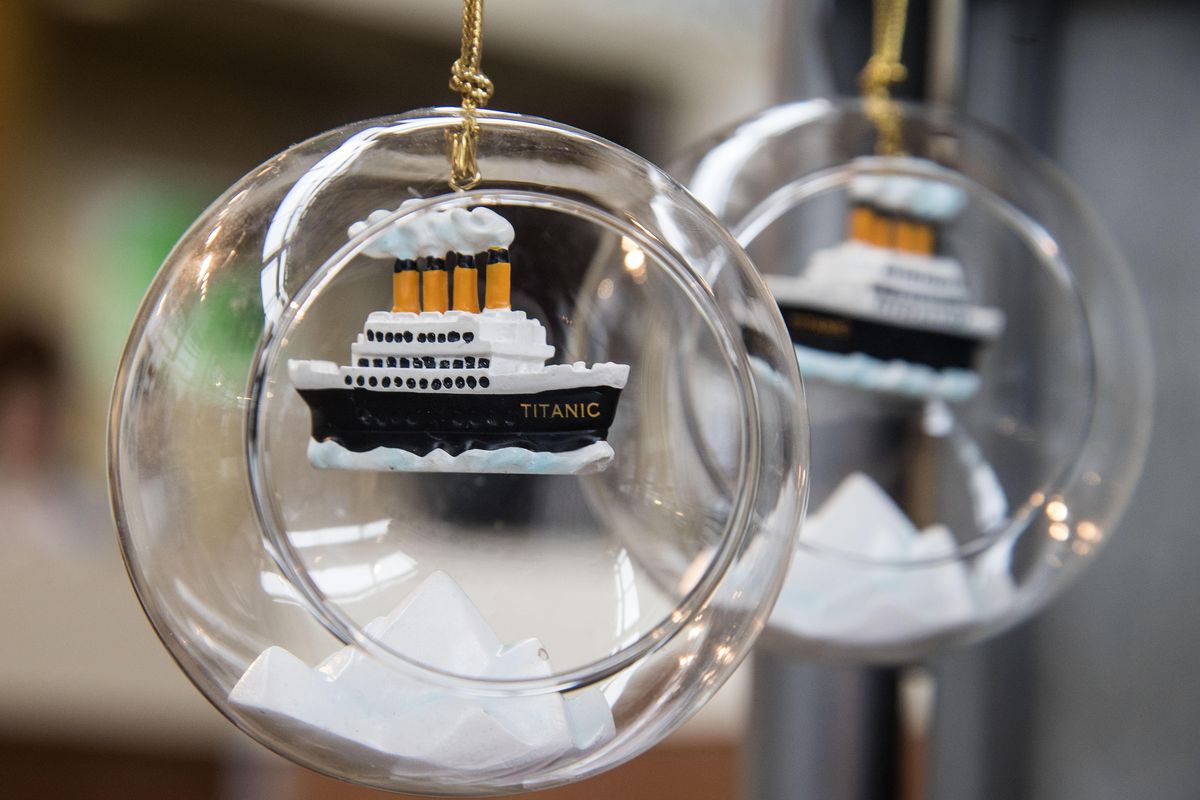Titanic artifact exhibition steams into the MAC

“Titanic: The Artifact Exhibition” isn’t a passive exploration of the world’s most famous ship. Visitors will be handed a replica boarding pass of an actual passenger and experience life on the Titanic before its demise on April 15, 1912.
There’s even an iceberg to touch.
The exhibition, which has attracted millions as it has toured around the world, opens Saturday at the Northwest Museum of Arts and Culture in Spokane. It takes visitors on a journey through the ship’s construction, depicts life on board for passengers of all class levels, and takes an extensive look at its sinking and subsequent efforts to recover artifacts.
Detailed re-creations of rooms on the ship are complemented by an astonishing collection of actual items recovered from the wreckage.
The Titanic has been a subject of intense fascination for more than a century, said Mark Lach, creative director for Premier Exhibitions and curator for the show.
“This was the first real news story that traveled the world at what was at the time lightning speed,” Lach said.
Labeled in the press as “practically unsinkable,” the ship left Southampton, England heading for New York City carrying the rich and famous, as well as immigrants hoping for a better life in America. The ship’s crew were warned of dangerous conditions the night of the wreck, but there were pressures to reach New York as fast as possible.
“There was greed involved and corporate interests, it’s just too perfect of a story,” Lach said. “It endures because of all these acts of cowardice and acts of heroism.”
When Lach was first asked to conceive the show, he became one of the few people allowed to visit the crash site first hand, traveling on the ship and one of the same submersibles used to film bookending scenes in James Cameron’s record-breaking 1997 film.
Lach said the journey to the bottom of the ocean was like the anticipation at the start of a rock concert where the stadium goes black before the headliner appears on stage. Only on the submersible, the black lasted two and a half hours.
“It was a sunny, hot day, and within 15 minutes the bright blue ocean outside the porthole fades to black, and for the next two hours you are in complete darkness,” Lach said. “It gets colder and colder, you’re putting on a jacket and more and more socks, and you’re starting to see your breath… and your teeth are chattering.”
When the submersible reached the seafloor, the pilot gestured to the porthole and Lach heard a light switch.
“Within 50 feet was the bow of the Titanic, completely clear,” Lach said. “It was a roller coaster of emotion.”
RMS Titanic Inc., a subsidiary of Premier Exhibitions, has the exclusive right to dive and recover artifacts from the debris field.
“We only recover things that have fallen from the ship,” Lach said. “We take it very seriously… we respect the integrity and the specialness that is this ship.”
Items recovered for the exhibition include china, suitcases, light fixtures and pieces of the ship itself. Leather items often yield documents and textiles inside them that remain intact, Lach said, and the group makes great efforts to identify the owners of the items recovered when possible.
Wesley Jessup, the MAC’s executive director, said the “Titanic” exhibition is the largest the museum has ever done. Months of planning and coordination went into bringing the exhibition to Spokane, with special care for the artifacts coming on display.
“These are high security objects,” Jessup said. “They are locked away and they are the last thing to be installed.”
Thanks to some clever engineering, one exhibit even gives attendees a chance to put their hands on iceberg.
“The story lends itself to being theatrical, so you’ve got to talk about the iceberg,” Lach said. “There was a concern of, ‘Is this going to be corny?’ But people put their hands on that ice, and they keep it on the ice, and there is some sense of what those folks went through (in the water).”
The exhibition tells the story of many heroes, survivors and victims of the wreck. The Memorial Gallery lists the name of the passengers and crew members of the Titanic – more than 1,500 of whom died in the disaster. Visitors can find the name of the person on their boarding pass to see if they survived the wreck.
“You learn a little bit more about your passenger, and you get to see it through their eyes,” Jessup said.
Jessup said the Titanic show connects well with Spokane history and some of the existing exhibits at the museum.
“The early 19-teens was a very prosperous time in Spokane,” Jessup said, adding that the architecture and building development in the city has a connection to some of the luxuries associated with the Titanic and the lifestyle of its passengers.
The museum will also bring attention to nine passengers on the Titanic who were connected to or were traveling to Spokane, and
will host a speaker series throughout the exhibition to bring even more insight into the history and legacy of the Titanic.
Just don’t go in expecting answers to fictional aspects of the movie. Nobody knows why Kate Winslet couldn’t fit Leonardo DiCaprio onto that floating piece of wood.
“I don’t know what Kate was thinking,” Lach said.